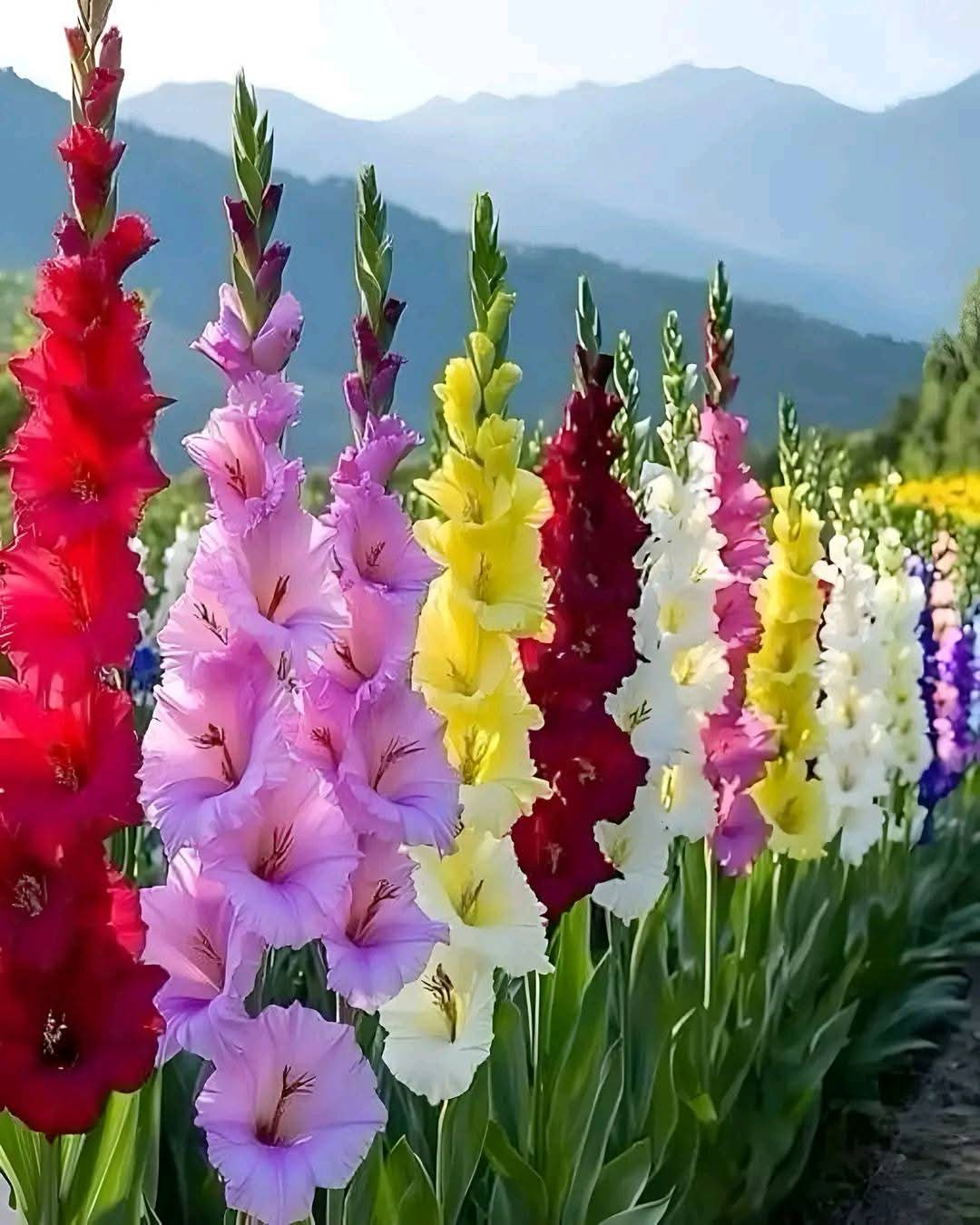Gladiolus, often referred to as “sword lilies” due to their elegant, sword-shaped leaves, are tall, striking flowers that add vibrant color to any garden. These beautiful blooms are grown from corms—underground storage organs similar to bulbs but solid in structure. Whether you’re a seasoned gardener or a beginner, growing gladiolus is both rewarding and straightforward. Let’s dive into the steps for planting, caring, and overwintering these spectacular flowers.
Choosing and Preparing Gladiolus Corms
The success of your gladiolus plants begins with selecting and preparing the right corms. Here’s how:
Select Firm Corms:
Look for large, firm corms free from blemishes, mold, or soft spots. Larger corms tend to produce more vigorous flower spikes.
Planting Time:
Mild Winter Areas: Plant gladiolus corms in early spring, just after the last frost.
Colder Climates: Start corms indoors 4-6 weeks before the last frost and transplant them outdoors once the soil warms. Alternatively, plant directly outdoors after the last frost. To extend the blooming season, plant corms every two weeks from spring through early summer.
Planting Gladiolus
Proper planting ensures healthy growth and stunning blooms.
Location:
Gladiolus thrive in full sun, requiring at least 6-8 hours of sunlight daily. Ensure the site has well-drained soil to prevent corm rot.
Soil Preparation:
Amend the soil with compost or organic matter to improve drainage and fertility. Gladiolus prefer slightly acidic to neutral soil with a pH of 6.0-7.0.
Planting Depth and Spacing:
Plant corms 4-6 inches deep, with the pointed end facing upward.
Space them 4-6 inches apart. In colder climates, plant slightly deeper to protect the corms from frost.
Staggered Planting:
For continuous blooms throughout the summer, plant corms in intervals of two weeks. This way, new flowers will emerge as earlier ones fade.
Caring for Gladiolus After Planting
To keep your gladiolus thriving, consistent care is essential:
Watering:
Water thoroughly after planting and maintain consistent soil moisture, especially during dry periods. However, avoid waterlogging, as it can cause corm rot.
Fertilizing:
Use a balanced fertilizer (e.g., 10-10-10) when the shoots reach a few inches in height. Apply fertilizer again when flower spikes start forming. Avoid over-fertilizing, as this can lead to excessive foliage growth at the expense of flowers.
Staking:
Gladiolus can grow tall (3-5 feet) and may require support to prevent the spikes from bending or breaking. Insert stakes near the corms at planting or when the shoots are a few inches tall. Tie the stems gently to the stakes as they grow.
Deadheading:
Remove faded blooms to encourage the plant to focus its energy on developing stronger corms for the next growing season. Cut the flower spike just below the spent blooms but leave the foliage intact.
Overwintering Gladiolus Corms
In colder climates, gladiolus corms need protection during winter. Here’s how to overwinter them:
Digging Up the Corms:
Once the foliage turns yellow and dies back in late fall, carefully dig up the corms using a garden fork. Avoid damaging the corms in the process.
Cleaning and Curing:
Shake off excess soil and trim the foliage to about an inch above the corm. Allow the corms to dry in a warm, well-ventilated area for 1-2 weeks.
Storing the Corms:
Store the dried corms in a paper bag, mesh sack, or a cardboard box filled with peat moss or sawdust. Keep them in a cool, dry, and frost-free location (35-45°F) until spring.
Replanting:
In spring, inspect the corms for any signs of rot or damage before replanting them for another season of stunning blooms.
Tips for Successful Gladiolus Growth
Companion Planting:
Pair gladiolus with shorter flowers like marigolds, petunias, or daisies to provide ground-level interest and support.
Pest and Disease Control:
Keep an eye out for common pests like thrips, aphids, and spider mites. Use insecticidal soap or neem oil as needed. To prevent diseases, avoid overhead watering and ensure proper spacing for good air circulation.
Cutting for Arrangements:
Gladiolus make excellent cut flowers. To harvest, cut the spikes when the first two florets open. Leave at least four leaves on the plant to allow the corm to replenish nutrients for the next year.
Rotate Planting Sites:
Avoid planting gladiolus in the same spot year after year to reduce the risk of soil-borne diseases.
The Beauty and Significance of Gladiolus
Gladiolus are more than just beautiful flowers; they hold deep symbolic meanings. Often associated with strength, integrity, and remembrance, gladiolus are a popular choice for gardens, floral arrangements, and celebrations. Their towering spikes of colorful blooms make them a standout feature in any landscape, while their diverse range of colors—from bold reds and oranges to soft pinks and whites—ensures a perfect fit for every gardener’s aesthetic.
Whether you’re growing gladiolus to enhance your garden’s visual appeal or to create stunning bouquets, these “sword lilies” are sure to bring joy and elegance to your life. With the right care, you can enjoy their vibrant blooms year after year, making them a cherished addition to any garden.
